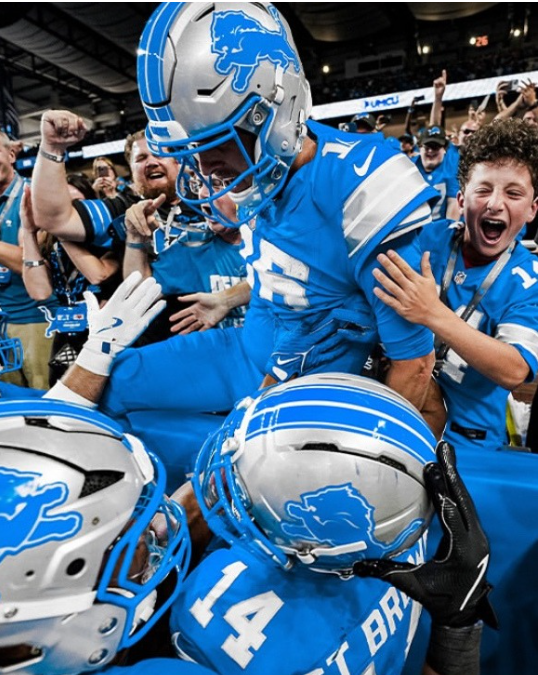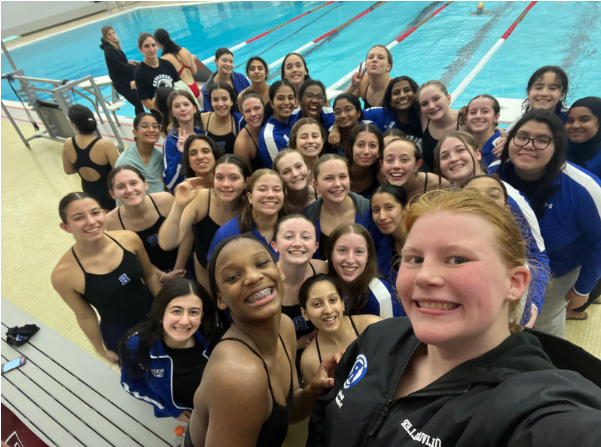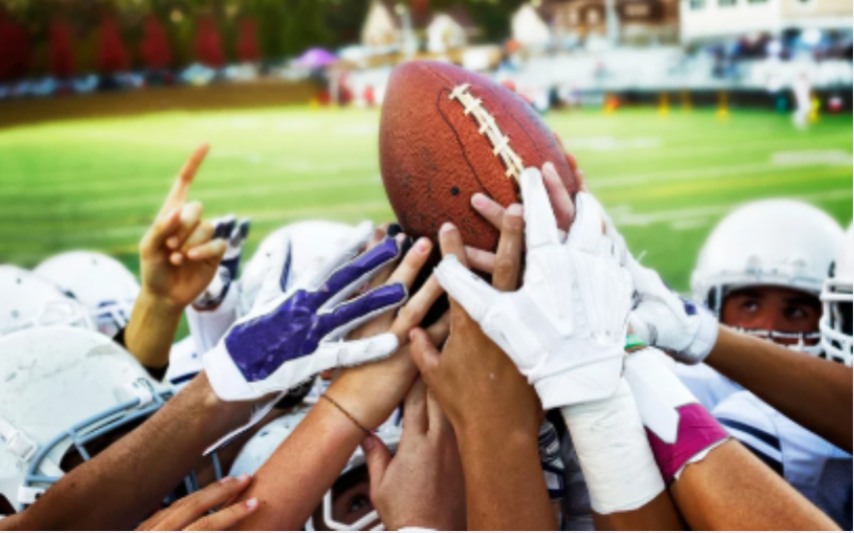Football is one of the most popular sports in the U.S. today. It unites families and provides fun entertainment. There is even an unofficial holiday, the Super Bowl, where everyone becomes glued to their television screen. Every NFL player had to start somewhere in their football career, and they probably started in high school football. Although it doesn’t matter what level of football is played, there’s always a considerable possibility of getting a head injury.
In a physical contact sport, the overall concussion rates will be high. “Overall, high school athletes experienced concussions at a rate of 4.17 per 10,000 exposures. Football had the highest rate per 10,000 exposures at 10.4…” (Jenco). The data in this article shows that a high school football player has almost triple the concussion rate of the average high school athlete. In Rochester High School, Ms. Wilke estimates, “about 5 players get a concussion every season. That one is kind of hard to put a number on just because every season is a little bit different.” However, there are many different types of protocols Rochester High School has to ensure their athletes’ safety.
With safety protocols in place, a proper team, and experienced coaches, the excessive stress of safety measures is reduced for the athletes. Rochester has many protocols, for example, Ms. Wilke, during her interview, mentioned that Rochester’s policy is a multi-step process to ensure when an athlete can resume their season. She stated, “all of these steps are completed in twenty-four hour increments so they cannot move onto the next step until 24 hours have passed… If any new symptoms come up, then we have to stop the progression where we’re at and then pick up when they’re back to twenty-four hours of no symptoms.” With specific drills and exercises, these steps are a lengthy process back to recovery. However, they’re required to make sure no player has a pre-existing concussion before going back onto the field. When Mr Wrinkle was asked about any further protocols this school could make he stated, “I know our coaches do a good job and our athletic trainer does a good job of making sure that we have our concussion protocols in place and I trust those guys are doing good work with that. I would certainly be open to any ideas that they have or that any professionals have.”
Additionally, one controversial protocol has been slowly incorporated into football throughout the years. The guardian cap is a padded helmet cover that protects heads from hard collisions. It’s controversial because of the way it looks, but guardian caps have been prevailing in recent years. Adam Glinski, a Rochester varsity football player, was asked if he feels there are enough safety precautions to make him feel secure out on the field. He responded, “I know a lot of these other schools have guardian caps and our school just hasn’t invested in those yet, but I know Adams wears them during practice, Stoney wears them during practice and that just kind of cushions the head area so I think that would maybe be a helpful investment.” Although Rochester hasn’t tried guardian caps yet, Mr. Wrinkle did comment on the idea of bringing them to Rochester High School, “I think that I’d have to see what the data says about how well it actually protects the head. I do think that more head padding and more protection there probably does make sense.” Rochester’s football team is well-secured and has many protection regulations in place to keep them safe. This school has only the best interest at heart for its student-athletes and will continue to improve security measures to ensure their safety.
Student-athlete isn’t just a title, but a play on words. There’s a reason why the word student comes before athlete. In high school, a student’s mind isn’t done developing. Thus, concussions and their side effects, headaches, and possible memory loss could harm the brain’s development. When Rochester High School’s principal, Mr. Wrinkle, was asked about his opinion on football and the dangers of head injuries he responded, “I think football is a fantastic sport and I think it teaches a lot of very important lessons to young men and women who play it, but I do have a concern over some of the data I have seen recently in terms of long-term concussions, issues and challenges that people face, so I’m all for trying to make the game a safer game to play, but I do think it is a valuable sport to continue.” Even though there are many health risks when playing football, the sport gives athletes the opportunity to gain cautionary advice. Varsity football player, Adam Glinski, was asked about the helpful lessons he’s learned in football he replied, “We learn a lot about teamwork and I guess hard work in general and how it pays off in the end.” Based on these interviews, football has been demonstrated to be more than a sport. It has proven to be a way to connect with others, to express yourself, and a way to gain important life lessons. These athletes know the danger they’re putting themselves in. They feel strongly that the risk is worth the reward.
All in all, football is a dangerous sport that has many risks involved, however, Rochester High School has come prepared to protect its students and allow them to play one of the most beloved sports in the United States. With protocols like the twenty-four-hour increment steps, padded football equipment, a wonderful team of medical professionals and a very qualified coaching staff, athletes can have peace of mind knowing they are being well protected.





